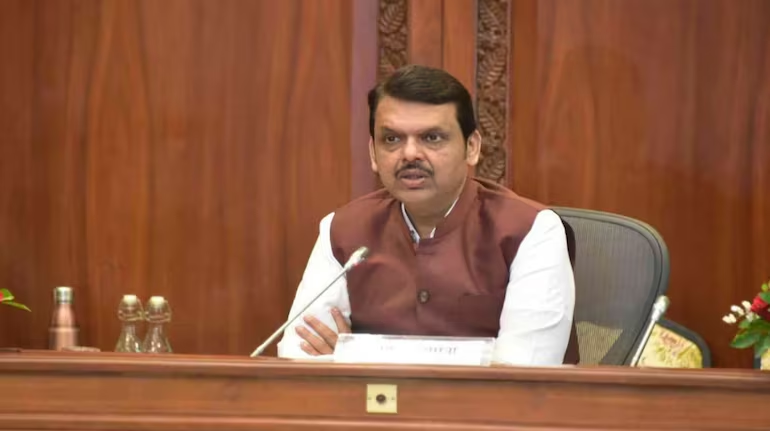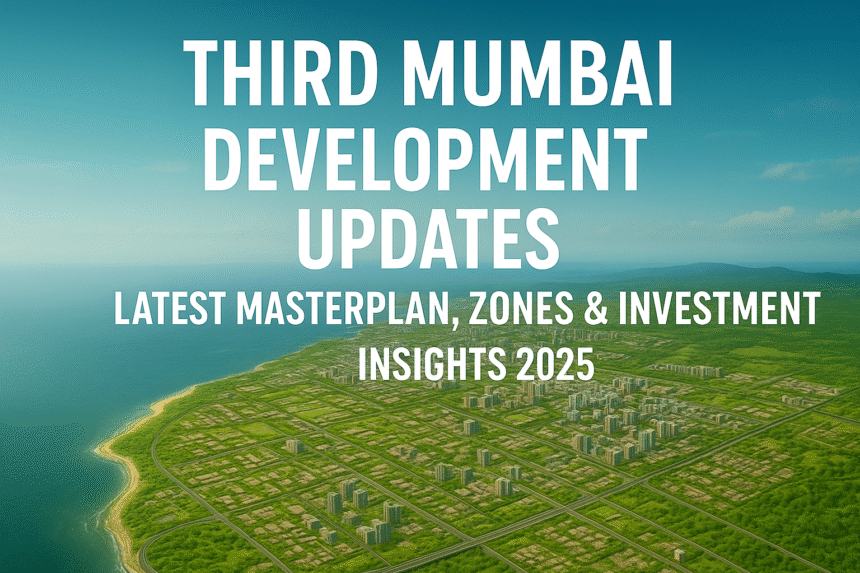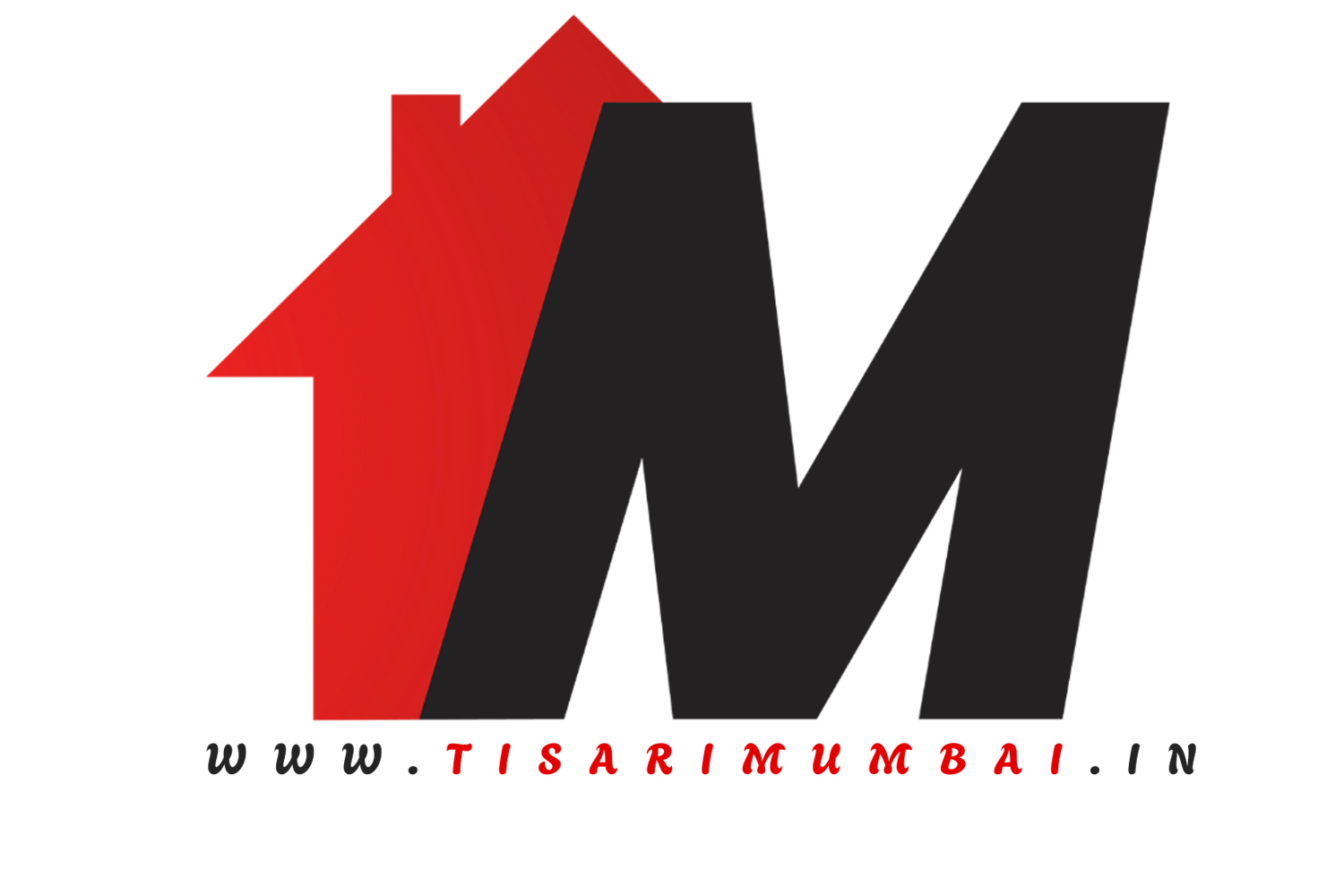Third Mumbai development updates are gaining momentum with new public declarations, master planning activity, and early tenders that show this project is shifting from vision to measurable impact. For property buyers, landowners, and investors eyeing long-term growth, this is the moment to understand what’s happening on the ground, what’s coming, where value is likely to concentrate — and what risks are worth watching.

What’s Changing: Key Announcements & Public Policy
Chief Minister Devendra Fadnavis recently outlined that Third Mumbai (also known as Mumbai 3.0) in Raigad district will include international universities, medical colleges, innovation hubs with emphasis on advanced fields like quantum computing and artificial intelligence, setting it up as a future-ready city.
The government has emphasized fast-tracked approvals for infrastructure and land acquisition. Investors are being invited to take part through public-private partnerships, and one major promise is seamless connectivity via major ongoing projects such as Coastal Road, Atal Setu, Worli-Sewri Link Road.
- What’s Changing: Key Announcements & Public Policy
- Defining the Geography & Phases: Where Third Mumbai Is Happening
- Why “Third Mumbai development updates” Matter for Real Estate
- New Zones & Infrastructure Projects Driving Momentum
- Landowner Models, Compensation & Regulatory Considerations
- What Investors Should Do Now (Actionable Steps)
Defining the Geography & Phases: Where Third Mumbai Is Happening
The project area is identified as Karnala-Sai-Chirner New Town (KSC New Town), covering large zones in the Raigad district including Chirner, Sai, Karnala belt and expansion into areas such as Pen, Ulwe, Dronagiri.
CIDCO has floated tenders for Town Planning Schemes (TPS) 2-7 and TPS 8-12, investing crores into detailed planning and infrastructure frameworks. This signals that the master plan is actively moving towards implementation.
Why “Third Mumbai development updates” Matter for Real Estate
When large scale masterplans are backed by government policy and public infrastructure, they unlock demand in multiple dimensions:
- Zoning & Education Hubs: The inclusion of universities, innovation centres, medical colleges make these zones attractive not just for residents but institutional investors.
- Connectivity anchors (Airport, MTHL, Coastal Road etc.) leverage accessibility, which sharply increases land value.
- Landowners’ participation: Land pooling models are under discussion. Under current proposal affected landowners may contribute a portion of land and receive developed plots with infrastructure, along with enhanced FSI.
New Zones & Infrastructure Projects Driving Momentum
Some of the key zones and infrastructure pieces you should watch:
- Panvel, Ulwe, Dronagiri: close to NMIA, benefiting from metro connectivity and logistics nodes.
- Chirner-Sai-Karnala (core of Third Mumbai) poised to be central spine—likely to see early investment.
- The proposed mobility plan for Navi Mumbai + NAINA area (2054 vision) will upgrade connectivity frameworks, enabling walkable, transit-oriented development.
Landowner Models, Compensation & Regulatory Considerations
- Under recent land contribution plans, landowners may need to contribute 60% of land and receive 40% back as developed plots, plus enhanced FSI (especially near village gaothans) as compensation.
- However, there are some protests and legal pushback from villages demanding fairer benefit share, better compensation, and more transparent public consultation. Infrastructure gaps and connectivity delays are also being raised.
What Investors Should Do Now (Actionable Steps)
- Review the latest master plan / TPS tenders — sectors TPS 2-12 are likely to define which areas get primary infrastructure first.
- Verify land title and development status — check with CIDCO, local authorities, see if plots are within proposed zones.
- Map connectivity anchors — proximity to airport, sea link, Metro lines adds premium.
- Think beyond purely residential — commercial, educational, logistics plots likely to gain even more.
- Monitor policy & compensation models — benefit models for land contributors and regulatory clarity are critical to risk reduction.
The Third Mumbai development updates show that progress is accelerating. What was once concept is now backed by clear master planning, tendering, infrastructure commitments and policy support. For early investors and landowners, these are exactly the signals to watch.
📩 Want to explore vetted plots or get advice on Third Mumbai / Mumbai 3.0 projects? Contact Tisari Mumbai for legal checks, plot data, and opportunities mapped to your budget.





